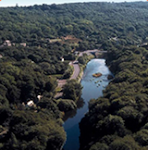I had accepted an invitation to speak at a double assembly at our village school and was intimidated by the prospect. They had been running a packed fortnight of activity that included making feeders and investigating their local wildlife. Concerned that my interest in wildlife would be met with glum indifference and boredom I set up my slides. I needn’t have worried as they threw up eager hands to tell of birdy encounters in their garden, ask bright and direct questions and a surprising number had had close encounters with barn owls. Inspired by their enthusiasm I reflected that the future was not as bleak as so many paint what with these young wildlife champions on the way.
At the Felton Butler slip road at the southern end of the Nesscliffe bypass a field with winter greens played host to a 200 plus strong flock of lapwing, and on today’s journey north a similar field had just said goodbye to an airborne mass of this crested wader.

The UK picture is not good for lapwing, though the local farming community are doing their best to accommodate the wet grassland preferences of this popular wild bird, re-wetting fields were possible and crop regimes adjusted carefully to generate the clumpy damp sward preferred by the ‘peewit’. Recent walks along wide field margins, left to encourage wildlife corridors in even our most intensely farmed landscapes, revealed other beneficiaries. A discarded sheet of broken hardboard when deftly flipped over exposed a common shrew, the thick feggy grass close by was riddled with bank vole tunnels. As the winter lingers the mixed flocks of fieldfare and redwing are still to be found, mainly raiding the last fruits of the hedgerow and occasionally into the garden for an apple treat.
Driving down into the hollow our headlights were reflected back by what we took to be cats eyes, but these moved and rapidly too, turning tail and back into the hedge. It was a polecat, in its winter coat, which tends to be much denser than its slim summer incarnation so it looks lighter in colour and rounder.

Once known as the foul-mart because of its strong smell, this wily predator had faced near extinction. The pelt or ‘fitch’ was prized and it was felt the animal was considered a threat to game and livestock. Slowly as persecution by trapping has declined this nocturnal carnivore has expanded back out of its Welsh heartland to cross the border back into England. Polecats occupy family territories which they mark using stink glands located at the base of the tail, this noxious spray is also used defensively, urgh! The polecat has a distinctive Zorro-like face mask and white ears, its near relatives the polecat-ferrets and the ferret proper lack such a distinctive look. Occasionally they hunt during the day but our late evening sighting is the more likely viewing.
Only my second sighting in a lifetime, the leafless scrubby woods allowed a wonderful look at the leaping and fleeting display of the woodcock as it made its spectacular aerial escape.
The woodcock is a wading bird that has taken to the woods, the Llynclys area seeming to be a favourite haunt. Its long narrow bill is used to probe the ground for worms and other food, the high set eyes giving it near 360 degree vision. The woodcock is able to grasp its young brood during the breeding season and airlift them to safety, either clutched in its claws or between her thighs. A spooky beating of its territorial bounds through March to July is known as ‘roding’, this slow flight accompanied by frog like croaking and high pitched whistling. As the winter shows signs of its inevitable end I hope to return here to experience for myself the Roding of this enigmatic and remarkable British bird. Spring is coming, stay alert it waits for no man, so much to look out for!
Happy wildlife spotting,
fond regards,
Pete Lambert.




































